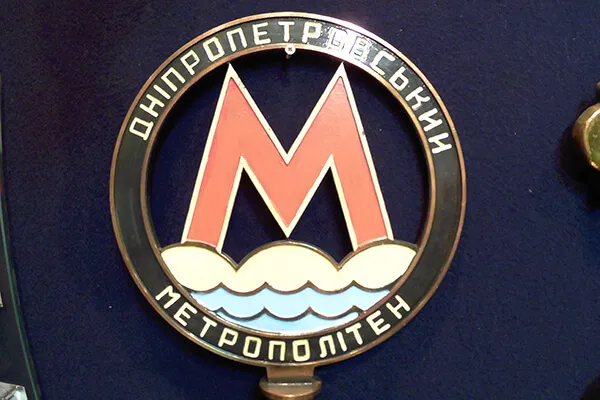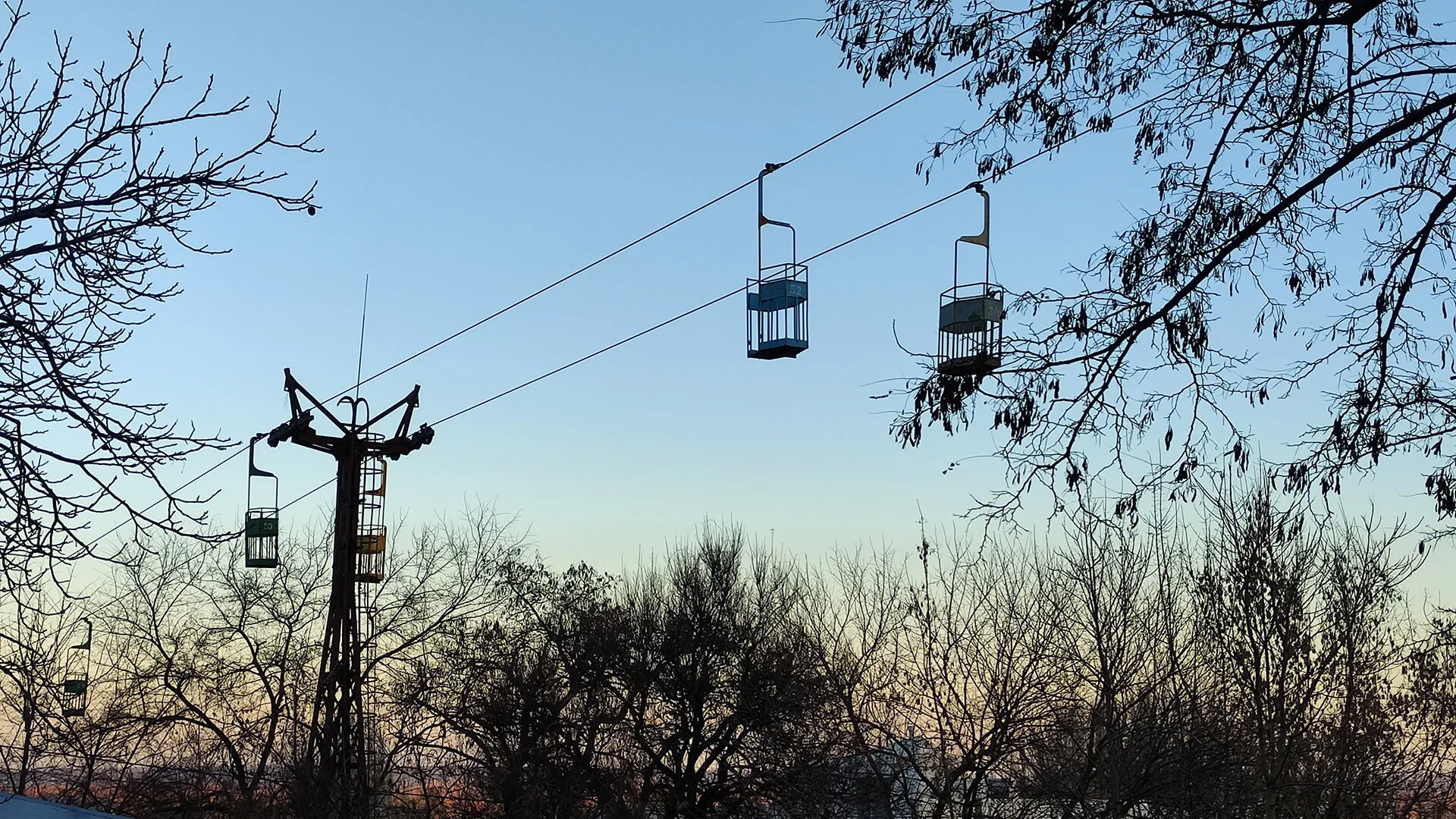
«Frozen» Dnieper ropeway
Preface
Recently, I learned from the head of a company that the plot on which the right-bank station of the passenger ropeway in Dnipro is located is being transferred (or has already been transferred, because time is of the essence) to a developer. It does not matter to whom exactly they transfer it and on what conditions – the result will be predictable. That is, in the next year and a half (but it is not certain, because martial law in the country still slows down some bureaucratic processes) the legendary ropeway will be dismantled.
A few years ago there were rumors that this engineering and transportation facility would be put in order…. But as they say «what’s the use of dead poultices?» (ts) – and this object (which nobody can save – and in fact nobody wants to spend investments, money and time on it) was passed from hand to hand like a hot coal (local mass media wrote a lot about it – so it’s not a secret). So nothing (good) for the ropeway and it did not end – quietly decided to get rid of it, transferring responsibility to the developers (who, as always, do not care about the opinion of citizens and threats of petitions).
Of course, upon learning of this news I hurried to make my own review and photo-video recording of the actual state of the legendary urban abandonment.
I don’t want to write about the history of the construction/development/decline of the ropeway now! Many people have written about it, even my capital city friend Vasilevsky Urbex under my editorship also wrote a «brief history» of the Dnipro ropeway – who is interested, follow the link. But I want to draw the attention of my readers to some other details, which are usually not discussed by the public.
By that, read my thoughts on the matter, and in parallel, see the photo fix I took in November 2023.



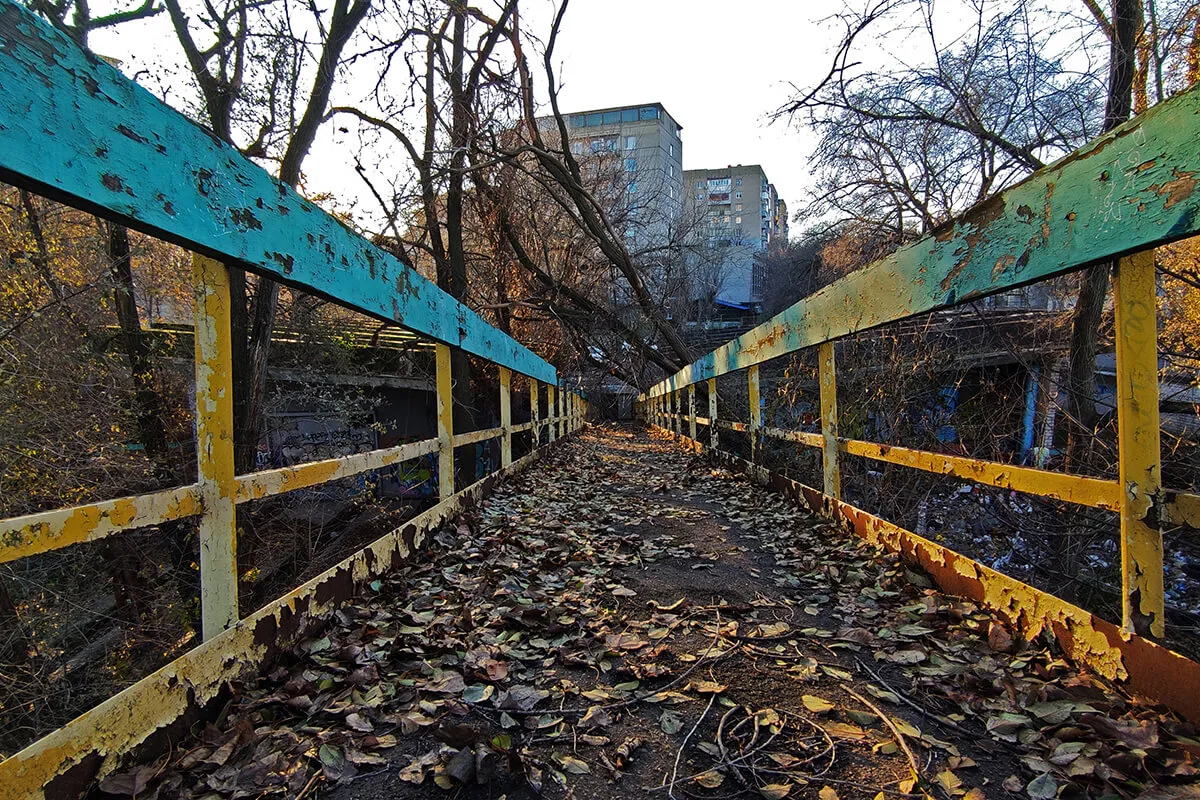

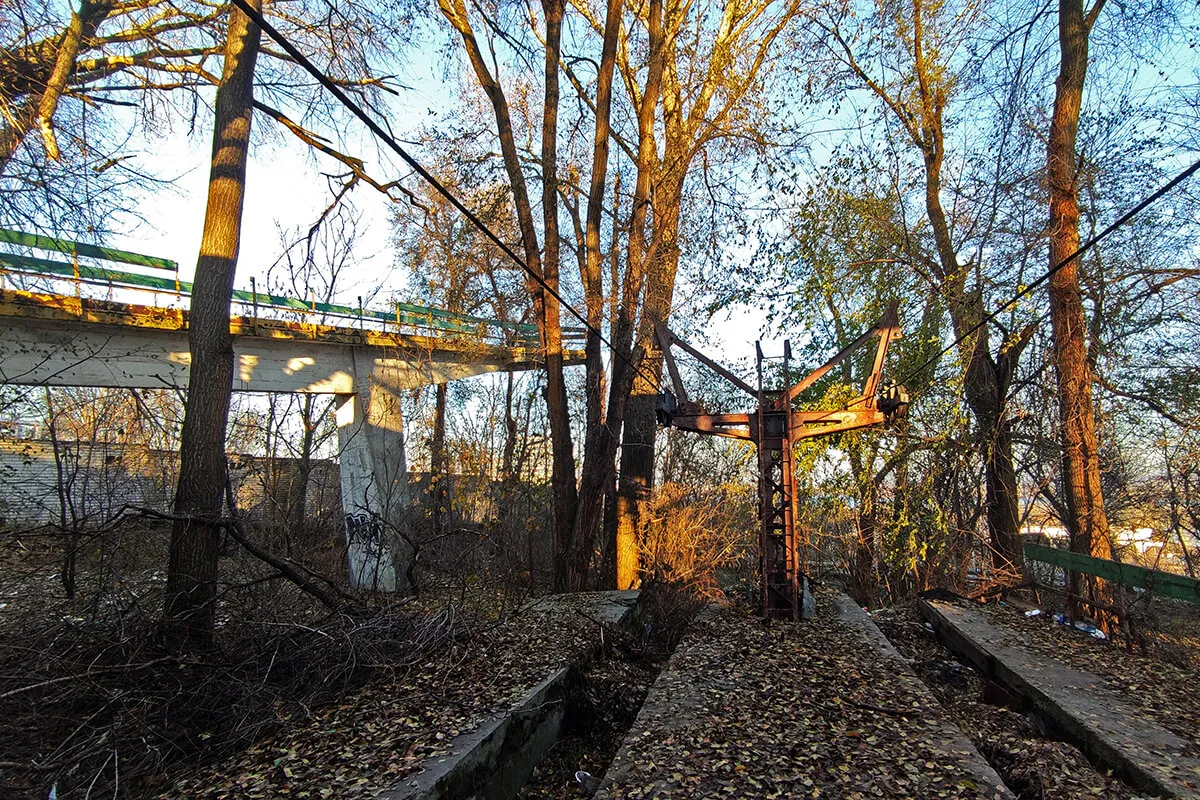
The contradictory uniqueness of the site?
The Dnipro (petro) v passenger cable car was built in 1968 – a unique linear transportation facility, and a unique (at the time of construction) engineering and architectural structure.
This is true, and I agree with this statement – it was entirely designed according to an individual project, and there is no other such facility. The building of the cable car «station» on the right bank – in general – is an amazing example of neo-modernist architecture in Dnipro.
It’s worth explaining for «neo-modernism» here, because since the 2010s this architectural style has been called «Soviet architectural modernism» (a term more common in infospace)!
Now, when you hear the word «Soviet», there will be local «activists» who will shout that «everything Soviet must be gotten rid of, because dekomu-not allowed – therefore, tear down the ropeway to hell!».
This is a very possible scenario – isn’t it?
But in fact two main (unexpected) factors were the inspiration for the «phenomenon» of neo-modernist architecture:
- 1st – the fight against excesses in construction – the Soviet architectural reform introduced in 1955, which «cut off the creative wings» of designers (and allowed only functionalism and utilitarianism of designs);
- 2nd – architects, limited (by the reform) in their creative activity had to look for new sources of inspiration, which became minimalist objects of Le Corbusier (i.e. architecture of no Soviet type at all) and the like, and create architecture, the expressiveness of which is acquired by volumes and the latest (at that time) constructions.
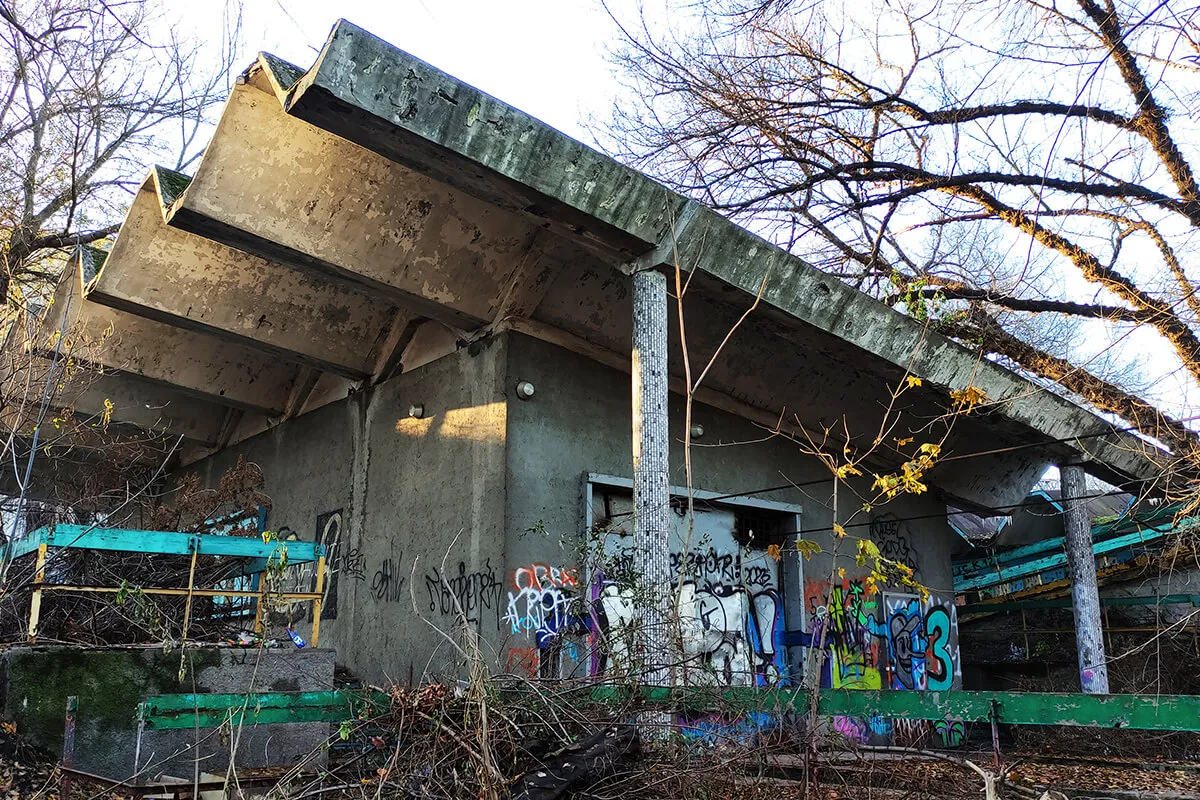




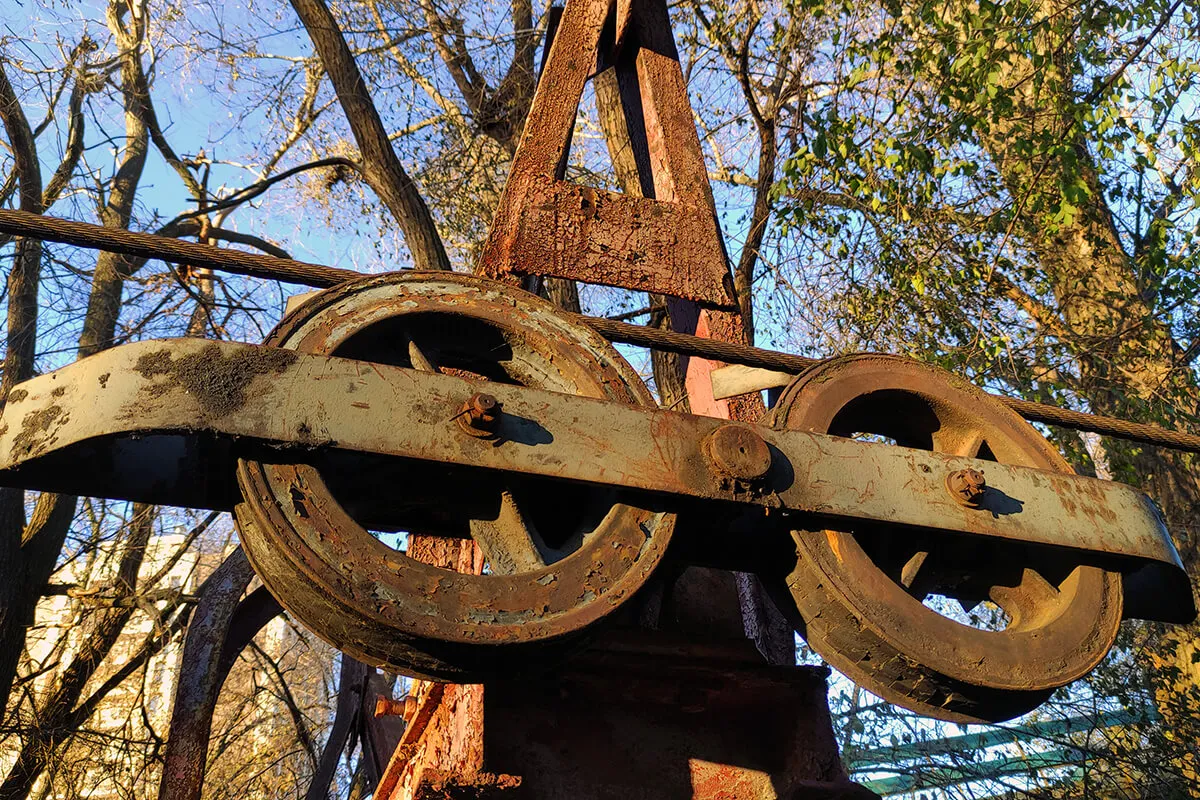
So what is the architectural value of the site?
The author’s team did not receive any state awards for the object (although they worked within tight deadlines and created a really significant object for the city). The Dnipro (petro) ropeway does not have the status of «architectural monument», or at least «valuable architecture», or «historical architecture», or «architecture» in general (wow!) – according to the documents it is a transportation object….
And on the other hand, a transportation facility can also be a legacy. For some reason, Kiev still maintains a funicular (not sure if it’s profitable) in working condition…. What about Ukraine’s children’s narrow gauge railroads (we have one in Dnipro)? And it is probably inappropriate to compare it with the Wuppertal cable car (because it is incredible).
Or is our ropeway – compared to the above, not worth considering at all? Think about it!
On the one hand «Soviet modernism» has managed to be so much customized – so it seems that nothing much will happen if one or two (one or two hundred) objects become less. And on the other hand, some neo-modernist objects have become interesting sites and tourist magnets not only for locals but also for foreigners (such as our traveler friend Ed Theman aka FastEddieDice).
This is also a heritage. As evidence of this, many activists in Kiev are now advocating for the preservation of such objects (hello to the activists of «Tsegla»). Petitions are being written, strikes and trials with developers are being held. I know some of these people personally – they are not «sovkodrochers», they are patriots who care about national values. They also care about this heritage, but without the «Soviet» stigma, because it was created by architects, not party figures.

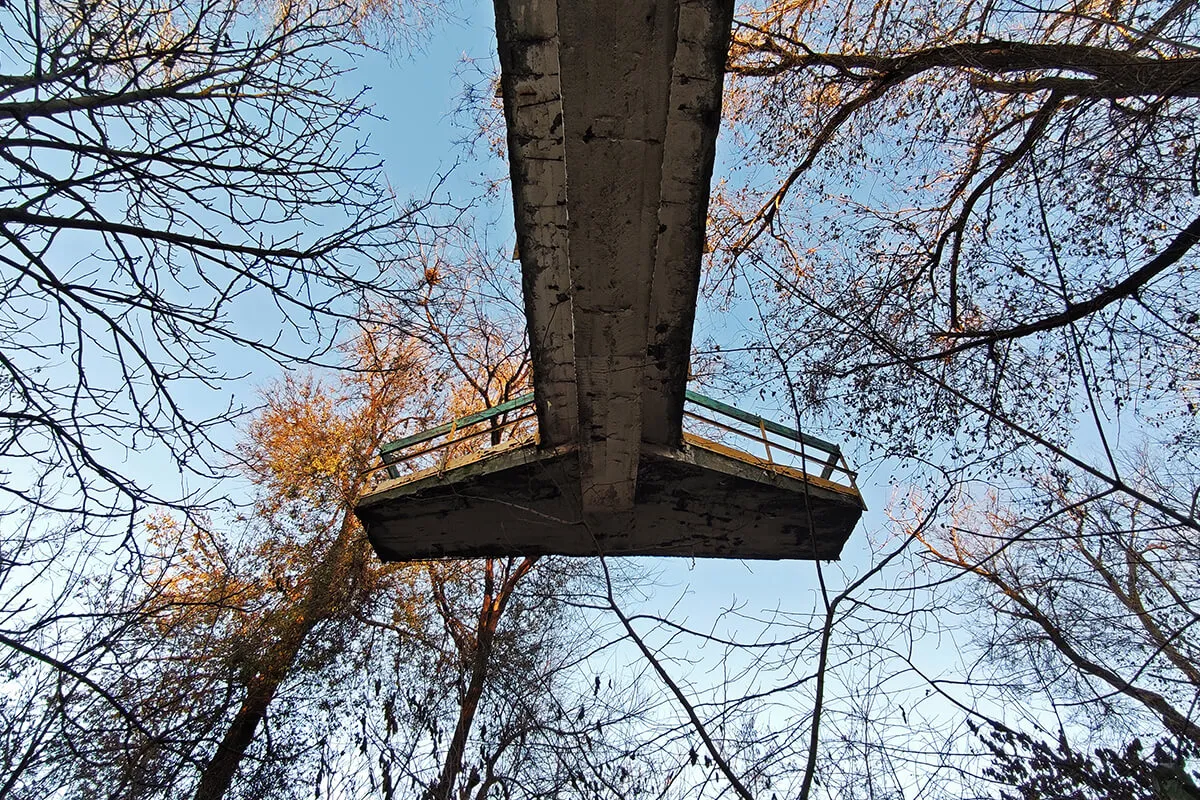


A tourist and social magnet?
I remembered the Kiev funicular and objects that have become tourist magnets for a reason – because the Dnipro cable car used to be just such an object. It may sound trite and romanticized, but this transportation artery was such a «teleport» that transported citizens from the bustle of urban life to rest. And anyone (engineer, professor, worker, seamstress, teacher, student or schoolchild), thanks to this construction (before that having run into a cafe for a kebab, beer or ice cream) for a few minutes and 717 meters of air travel turned into a beachgoer, a walker, a sportsman, a fisherman or young people in love, who would communicate in cozy corners of the park zone.
This was facilitated not only by the cable car, but also by the already legendary city cafe «Minutka». This object of «public catering» became an amazing example of symbiosis with a transportation object. Everyone who at least once rode the cable car will remember the cafe in which (having already bought a ticket for the ferry) ran for a minute to buy goodies and drinks (usually alcohol and snacks) …. I was thinking – maybe that’s why the cafe was called «Minutka»? ))))
And for children it was amazing entertainment – a wonderful attraction (the best of all that were on Monastery Island) – you fly over the city and the strait and eat ice cream, which your parents bought you, and watch the cars and sailboats go by below. It’s an amazing experience (from personal childhood memories).
It was a powerful local tourist magnet. Probably, even today, if the ropeway worked, this object would be in demand. I have heard opinions of my acquaintances that even if a ticket to the ropeway today would cost 100 hryvnias, they would ride it at least once a month (and maybe every weekend). Someone will say that 100 hryvnias for a ride is very expensive for 7-10 minutes of travel … But in this case people buy not a fare, but emotions. It is emotions that are the main engine, it is emotions that make people pay money and endure inconvenience, it is emotions that could become a commercial engine that could attract the attention of investors.
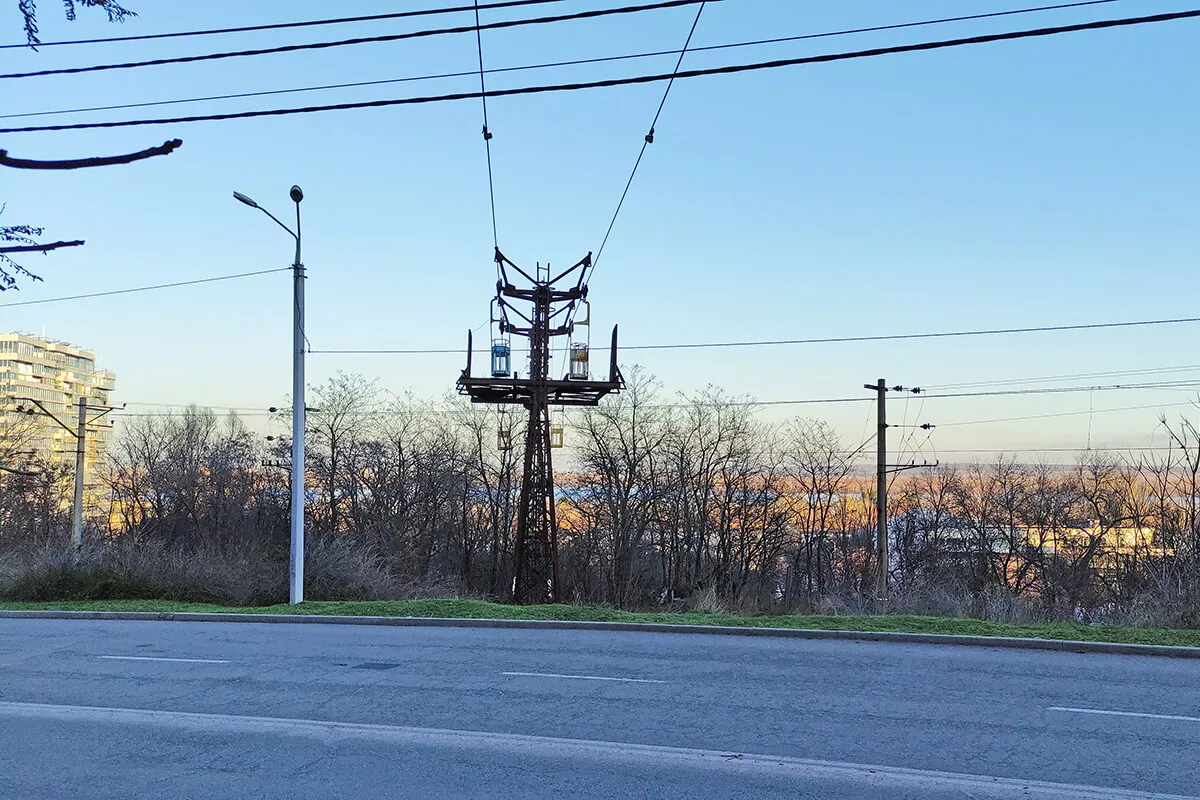



Is holy ground a cursed ground?
Are you a fan of urban myths?
Whether true or fictional, they stir the imagination and make the city’s history richer. Let my imagination form a new urban myth 🙂
/«Or maybe the constant problems with the cable car have to do with the fact that it’s cursed?» (ts)/
That is, everything that is built on this piece of city land is anathema…. Of course, I’m fantasizing, but it’s a possibility. I’ll explain.
Those who are interested in the history of the Dniepro, know that on the eastern slope of the Nagorny part of the city, there was the Church of the Holy Cross (Hierarchy) – a beautiful temple building in Neo-Byzantine style.
So, this land (on which the ropeway was later built) since 1856 belonged to the bishop of Yekaterinoslav, for whom a plot of land and a building for accommodation were allocated, also on this very plot was built the Church of the Holy Cross (so this land was definitely consecrated). If you look at the interactive historical maps of the port OldMaps.dp.ua, which are synchronized with modern satellite images, on the historical layers this place is indicated as: 1901 – «Hierarch’s House», on the maps of 1905 and 1915 – «Hierarch’s Place», on 1913 – «Hierarch’s Garden».
At the turn of the 1920s and 1930s, the Communists became interested in the churchmen’s possessions, and under the pretext of withdrawing funds for the needs of the starving, the Soviet henchmen decided to confiscate all the riches that were in the bishop’s possessions. The attempt of the churchmen to save some of the jewels by burying the treasures in the Hierarch’s garden ended in betrayal and the seizure of the treasure. Soon the garden was completely cut down for firewood, and later all the church buildings were confiscated for the needs of the commissariats.
I would not be surprised that the communists, looking at the wealth of the religious – cursed the church…. And the churchmen, after mass confiscations and arrests, cursed the proletarians….
Therefore, in this powerful conflict of two opposite egregors, the energy of curses on this piece of land must be off the scale.
Damaged by the Communists and the consequences of World War II, the building of the Church of the Holy Cross stood until the late 1960s. With the start of construction of a new landmark facility – a passenger ropeway – at this site, the church was slowly dismantled.
Isn’t it symbolic that the date of commissioning of the ropeway and the date of dismantling the church coincide? It’s 1968. And then construction equipment will come here, dismantle the ropeway and quickly erect something new on this place. And again (in the interpreted sense) history will repeat itself on this piece of land.

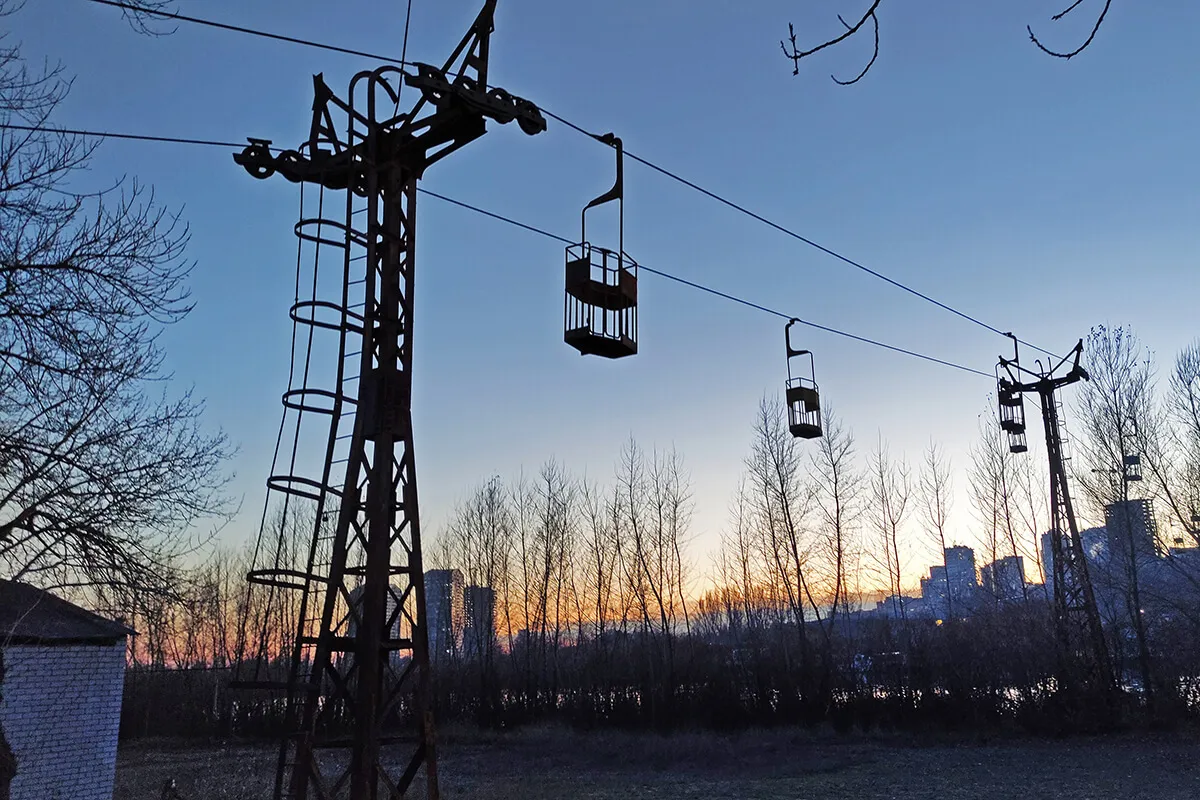


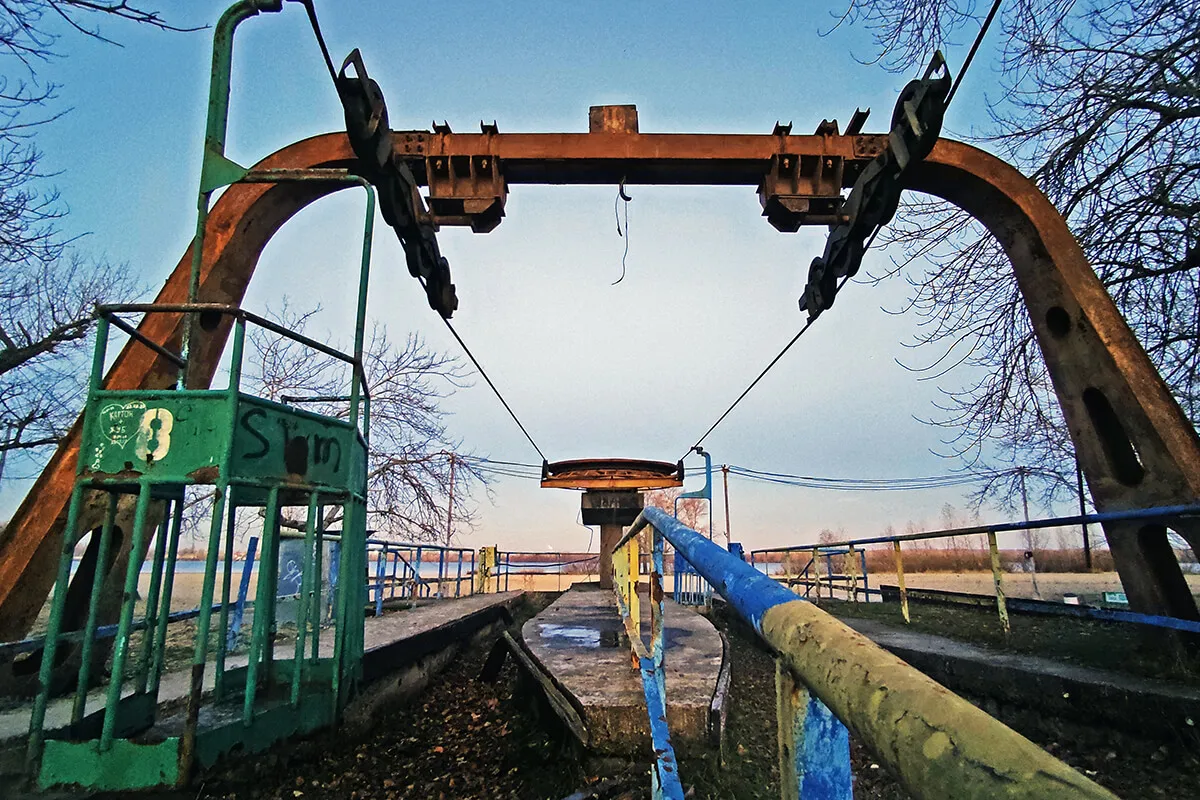

Bottom line
I am not against the development and rejuvenation of depressed areas of urban land – a modern European city should develop. But as for the Dnipro ropeway – there is a lot of controversy about its dismantling.
Let me model a little «sopr» on a few key issues.
– It’s hard to call it a travel magnet – are there a lot of downsides?
– Of course there are disadvantages, but don’t market the pluses either!
– The facility cannot be used all-season.
– Yes, but if you replace the old cabins with modern closed type – it is possible.
– The object has structural and technical flaws, something is constantly breaking.
– There was such a thing, but modern engineering technologies allow modernization of mechanisms.
– This object will never be profitable.
– Nothing is impossible for marketers. Hire an SMM guy – promote/publicize the facility and raise the fee.
– What about safety?
– Changing the booths and modernization already solves that issue. Don’t they?
– Commercial real estate will make more money than a cable car.
– But commercial real estate integrated with the existing ropeway would have more profit.
I deliberately do not want to make specific conclusions, on this object, so I wrote quite contradictory “opinions” in order for my reader to decide for himself what this architecture is worth …. excuse me – a transportation structure.
So choose for yourself whose side you are on in the above model of the dispute.
And for those who couldn’t get enough of photo ops, check out this emotional video review.
P.S.
While preparing this article, I remembered another interesting story about the Dnieper cable car, which I was directly involved in. But that will be the occasion for the next article – so read the continuation of this topic.
Lastly, I would like to remind you about my Telegram channel «That Weissman» – where I often make a lot of small publications. Also, any objects I have visited, or my publications or videos can be discussed in a friendly chat https://t.me/weissman_chat.
And that’s the end of it! Wishing us a peaceful sky!

